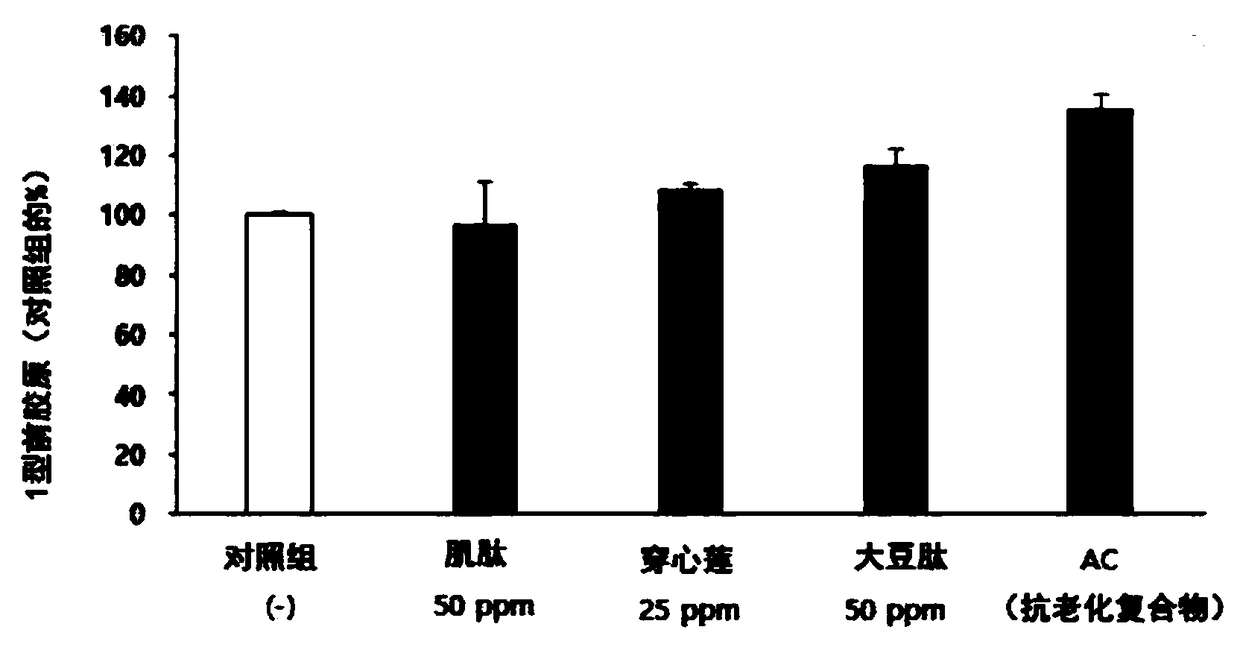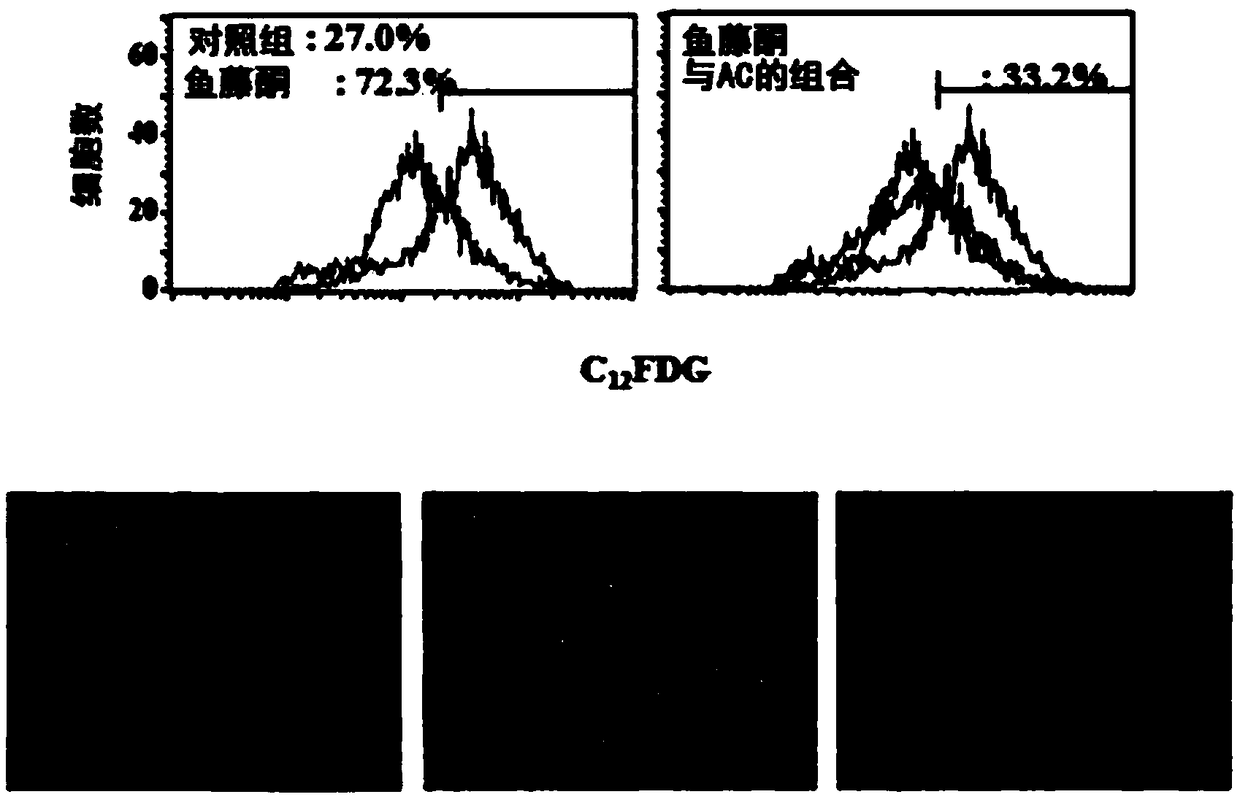Anti-aging composition comprising carnosine, soy peptide, and andrographis paniculata extract
A cosmetic composition, anti-aging technology, applied in the protein composition of vegetable seeds, application, cosmetics, etc., to achieve the effect of enhancing skin active growth factor reactivity, inhibiting cell aging, and improving skin aging
- Summary
- Abstract
- Description
- Claims
- Application Information
AI Technical Summary
Problems solved by technology
Method used
Image
Examples
preparation example 1
[0041] prepare Andrographis paniculata extract
[0042] After the whole herb of Andrographis paniculata was cleaned, it was dried in the shade and ground, then the dry sample of 1kg and the auxiliary solvent ethanol (99.5%) of 500~700ml were put into a supercritical fluid extraction reactor (Natex, Australia), and in the reaction The temperature inside the vessel was 40° C., the pressure was 10 MPa, and the S / F ratio (supercritical fluid kg / Feed kg) was 35, and the extraction was performed using a total amount of 40 kg of carbon dioxide. Then, the mixture of carbon dioxide, ethanol and raw material is passed through the separation device, and the extract is separated from the carbon dioxide by changing the pressure and temperature of the mixture. The obtained extract was concentrated under reduced pressure to remove ethanol in the obtained extract to prepare 121.4 g of Andrographis paniculata extract.
preparation example 2
[0043] Manufacture of a composition containing carnosine, andrographis paniculata extract and soybean peptide
[0044] Carnosine, Andrographis paniculata extract and soybean peptide were mixed at a weight ratio of 1:0.5:1 to prepare a composite compound (AC) composition containing carnosine, Andrographis paniculata extract and soybean peptide.
Embodiment 1
[0045] Cytotoxicity test of the composition
[0046] A cytotoxicity test (MT T) of the composition was performed using human-derived fibroblasts. The fibroblasts were treated with carnosine, andrographis paniculata extract, and soybean peptide at concentrations of 0, 10, 25, and 50 μg / ml, respectively. After two days of culture, 3-(4,5-dimethylthiazol-2-yl) 2,5-diphenyltetrazolium bromide (MTT: 3-(4,5-dimetylthiazol-2-yl) 2,5-diphenyltetrazoli umbromide) was used to measure the cytotoxic effect of cells. The cell viability was converted by the percentage relative to the negative control group, and the results are shown in Table 1.
[0047] Table 1
[0048]
[0049] No significant changes were shown in cell number. When each substance was treated together at the maximum concentration that did not show cytotoxicity when treated separately, no significant change in cell viability was observed. Based on this result, the concentration of the complex compound treatment perfo...
PUM
 Login to View More
Login to View More Abstract
Description
Claims
Application Information
 Login to View More
Login to View More - R&D
- Intellectual Property
- Life Sciences
- Materials
- Tech Scout
- Unparalleled Data Quality
- Higher Quality Content
- 60% Fewer Hallucinations
Browse by: Latest US Patents, China's latest patents, Technical Efficacy Thesaurus, Application Domain, Technology Topic, Popular Technical Reports.
© 2025 PatSnap. All rights reserved.Legal|Privacy policy|Modern Slavery Act Transparency Statement|Sitemap|About US| Contact US: help@patsnap.com



